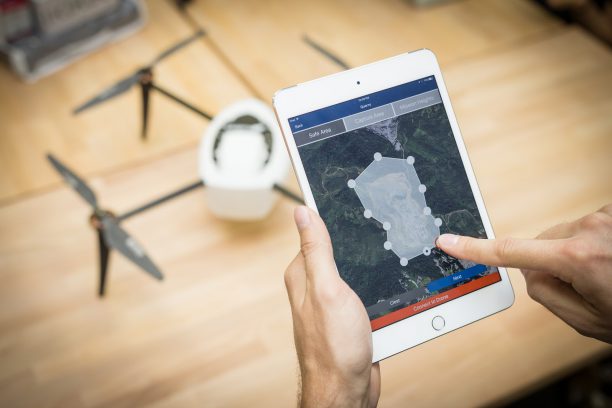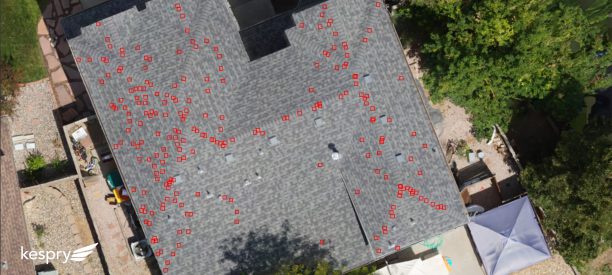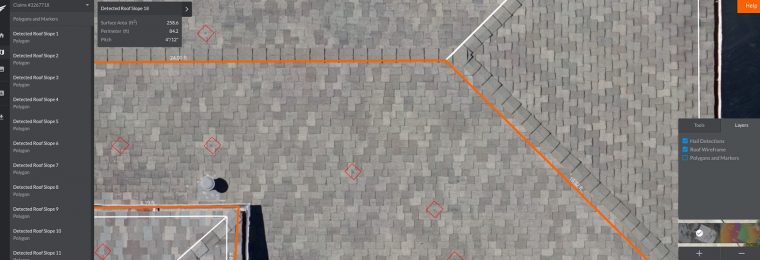Manufacturers of unmanned vehicles are almost always referred to as “drone companies.” For enterprise solution providers like Kespry, however, drones are simply a tool used to gather the real product – data. Data is what provides real value to the customer; giving them better decision-making tools, a measurable return, and a competitive edge.
“Actionable Data” is the commercial drone industry’s reason for being. The data must be reliable, consistent and meaningful enough to significantly impact profitability in order for large companies to adopt a drone program. Enterprise customers expect a high level of return: for example, many Kespry customers measure a return of greater than 10x, and in some industries, like insurance, productivity can more than double in areas that drone programs influence. As the data gets easier to gather, more accurate, and more useful, enterprise customers receive even more value – and the commercial drone industry accelerates.
Artificial Intelligence (AI) and machine learning are major contributors to the growth of the drone industry. AI is a broad technology: one that has helped to develop driverless cars, medical breakthroughs, and big data analytics. In the drone industry, AI can affect every aspect of a drone program from hardware to the data analysis and insights. It can serve to both remove barriers to adoption and increase value.
AI augments the skills and expertise of the human operators, allowing them to pass the sometimes tedious, time consuming and dangerous work of data gathering to a machine system. This gives subject matter experts more time to interpret and act on the information received. It makes their jobs safer and more productive.
Better analysis and recognition tools allow human experts to hone in quickly on data points that may require a decision, helping them to be more accurate, more consistent, and more effective in their work. Far from replacing humans, AI technology helps them to do more.
Commercial drone programs can be complex systems. The best enterprise solutions like Kespry offer a tightly integrated, full-stack solution: providing the drone, the data pipelines, the analysis and specialized cloud apps to provide further insights. AI can be used throughout the whole stack: from data gathering to decision making.
AI is perhaps best known for the stunning example of driverless cars. That same type of technology used on a drone makes the system truly autonomous – and very simple to use. The Kespry drone can make its own decisions about avoiding obstacles and solving problems. It uses a few taps on an iPad to plan a flight, rather than requiring a pilot using a joystick console to steer. It can launch, fly, and land without operator intervention – which translates into ease of use, short adoption times, and the ability to utilize industry experts rather than drone pilots to run the program. Overcoming the requirement for difficult pilot training and specific flight skills is a major factor to accelerating the commercial industry.
Kespry Automated Drone System

The Kespry Automated Drone System has no joysticks.
The data pipelines can also benefit from AI technology. Automating data gathering – allowing the machine to choose the correct tools and method for the job, and to deliver the data to analysis applications – makes the data more accurate and consistently reliable. Users of an autonomous drone like Kespry’s don’t have to rely on the skills of a specific operator in a specific environment, subject to making the inevitable human error on any one of numerous decision points, to ensure that the data gathered at every mission is usable. This allows customers to gather the data more frequently, and to make more detailed and useful comparisons. When all of the data is high quality, companies can use it more confidently across their organizations, receiving more value.
Data, no matter how reliable and accurate, isn’t enough without analysis. It’s in the applications that process the data that companies receive the most meaningful and actionable information. Applying AI to large quantities of data means that organizations can receive more insight than ever before – more quickly. AI tools used in industry-specific data analysis applications mean that subject matter experts spend far less time weeding through reports and more time making decisions about the pertinent data points.
In a vertical solution like Kespry, data travels seamlessly from the drone to the cloud for processing and cloud apps for specific analysis. Using AI and machine learning for data analysis translates into enhanced information, delivered quickly: for the insurance industry, for example, customers using the Kespry Cloud can benefit from detailed roof models, inspection-quality images and tools like automated hail damage detection. These are tools that make it fast and easy to generate accurate and consistent assessments across the enterprise: a benefit that directly impacts the bottom line.

Automated Damage Detection in Kespry Cloud
AI has the potential to touch every area of our lives. In the future, edge AI solutions may put even more machine learning capabilities on the drones themselves, shortening the time between data gathering to decision even further. New tools may enable greater analysis and make available detailed predictions only guessed at today.
In industrial drone solutions, the integration of AI into hardware, data pipelines, and analysis tools provides customers with more value, more easily – and it’s the increased value that is accelerating the Commercial Drone Industry.



